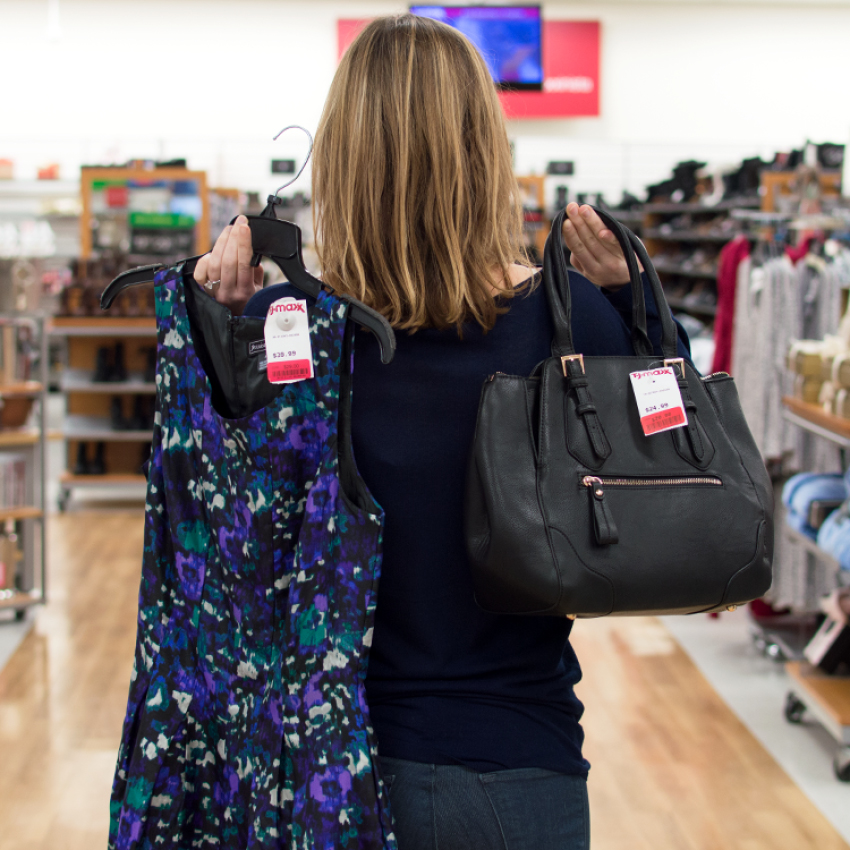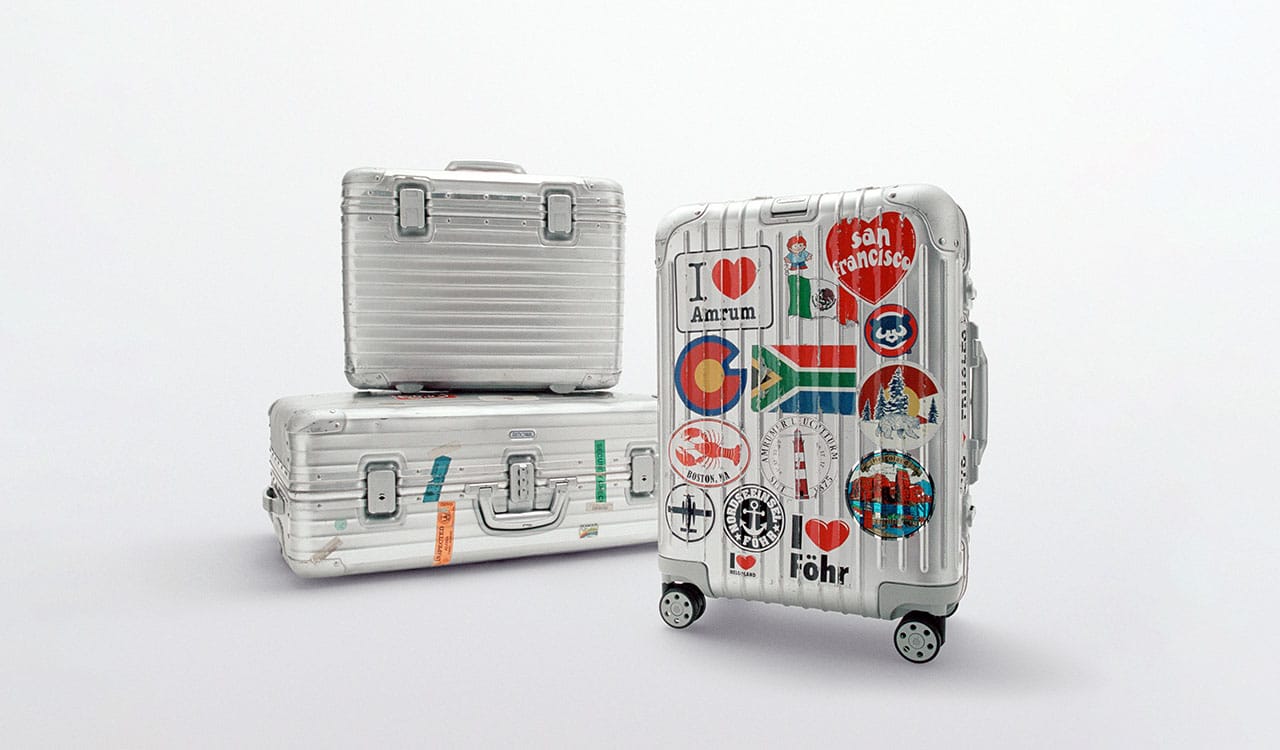Over the past quarter-century, the growth of off-price has been one of the biggest long-term retail trends in the U.S. Neither the 2000 tech bust nor the Great Recession of 2008-2009 interrupted the growth of this market segment. The increasing size of off-price relative to the full-price retail ecosystem (and especially department stores) hasn\’t hindered growth, either. During the decade ending last year, industry leaders TJX Companies, Ross Stores, and Burlington Stores all roughly doubled their sales.
However, that long-term growth trend has given way to steep sales declines in 2020. Off-price retailers were classified as nonessential and forced to close in the early stages of the Covid-19 pandemic. While stores have now reopened, traffic has remained well below 2019 levels. Furthermore, most off-price retailers do little or no sales via e-commerce, preventing them from shifting sales to the one channel that never closed.
A bullish data point comes from foot traffic-tracking firm Placer.ai. that traffic to off-price retailers has improved steadily over the past several months. Notably, the same can\’t be said for department stores, which experienced bigger traffic declines over the summer and have not seen the same kind of steady progress since then.
Pundits expect many of the changes in consumer behavior that have taken hold this year to continue even after the pandemic ends. Nevertheless, off-price retail is quite likely to rebound in the years ahead.
Market Share Disappears Overnight
As the Covid-19 pandemic swept across the U.S. in March, traffic to discretionary retailers plunged. By the middle of March, many discretionary retailers began to close their stores temporarily. In some cases, this was voluntary; in many cases, it was enforced by local health authorities.
The result was a massive plunge in sales for all of the major off-price retailers in the first quarter of the fiscal year (roughly speaking, the period running from February through April). In fact, TJX, Ross, and Burlington all reported sales declines of slightly more than 50% for the period.
Stores began to reopen between April and July, depending on the specific chain and region of the country. When they did, traffic was far below normal levels. As a result, second-quarter sales fell 32 percent for TJX, 33 percent for Ross Stores, and 39 percent for Burlington Stores.
Other retailers were better positioned for the pandemic and took advantage. Not surprisingly, Amazon.com was one of them. For the April to June quarter, net sales jumped 43 percent year over year for Amazon\’s North America segment. Even Target (which still does the majority of its sales in physical stores) posted a 25 percent sales jump for the three-month period ending in early August.
Buying Habits Have Changed in 2020
Off-price retailers\’ store closures drove some of the discrepancy in sales trends relative to Amazon and Target during the spring and summer. Different merchandise mixes also played a big role. Yet those factors alone can\’t come close to fully explaining off-price retail\’s underperformance.
First, virtually all stores that had closed because of the pandemic had reopened by the beginning of the third quarter. Nevertheless, TJX\’s management told analysts in August that comparable sales would probably decline 10 percent to 20 percent for the quarter. (Analysts are calling for total sales to decline 11 percent year over year.) Ross and Burlington didn\’t provide any guidance, but analysts expect them to perform similarly. By contrast, Amazon and Target (and Costco, among others) are on track to continue growing sales at a double-digit pace.
Second, Target told investors during its August earnings call that apparel sales grew by double digits in the second quarter. In the home department (another key category for most off-price retailers), Target\’s sales growth exceeded 30 percent.
Thus, people are still buying a fair amount of the stuff TJX, Ross, and Burlington sell: they\’re just buying it elsewhere, at places like Target and Amazon. Even with off-price stores reopened, there has been a distinct market share shift.
It isn\’t surprising that the threat of the pandemic has led consumers to shift more spending to e-commerce. On top of that, the pandemic has accelerated a trend of consumers consolidating trips. Most shoppers at Target are probably there primarily for groceries and other household basics, but while they are there, they may also buy clothing or pick up some new decor items for their home.
The danger for off-price retailers is that shoppers\’ new habits will stick. There\’s obviously a substantial convenience benefit to one-stop shopping at Target or buying online from Amazon and having purchases show up at your door within a day or two. Moreover, both retailers tend to be competitively priced. Walmart, Costco, and even Tractor Supply will also continue to benefit from the convenience factor long after the pandemic ends.
Off-Price Maintains Advantages
While traffic to off-price retailers remains depressed by 2019 standards, there are significant built-in advantages that should help off-price recover once people are comfortable shopping in stores again.
- First, off-price retailers have access to brands that won\’t sell through traditional mass merchants. With thousands of stores around the globe, TJX can easily liquidate 10,000 or more units of a designer closeout item while keeping those items \”hidden\” on the sales floor. This enhances the treasure hunt experience; a few lucky shoppers will get a fantastic deal. At the same time, it protects the vendor\’s future pricing power, as it isn\’t widely known what is available.
- Second, off-price retailers that cater to lower-income demographics have a massive cost advantage over online competition, due to the cost of shipping to customers\’ homes. This is a major reason why Ross Stores has never operated an e-commerce site and why Burlington decided to close its e-commerce business earlier this year. As Burlington Stores CEO (and longtime Ross Stores executive) Michael O\’Sullivan put it on the company\’s Q2 earnings call, \”In the categories that we sell and at the price points that we offer, it is very difficult for e-commerce to satisfy the needs of the value conscious shopper, so as a result off-price retail has been gaining market share.\”
- Third, off-price stores have no walls between departments. That simple physical difference relative to department stores and even mass merchants like Target makes them far nimbler. If the recent shift in demand from apparel to home, beauty, and other categories continues beyond 2020, off-price retailers will be able to shift their merchandise assortments in response.
Signs of Hope
While off-price retailers are still posting sales declines overall, a closer look at recent business trends paints a more optimistic picture. HomeGoods offers the clearest sign that off-price will bounce back.
Whereas most of the major off-price chains derive the majority of their sales from apparel and footwear, TJX\’s HomeGoods concept (along with sister chain HomeSense) is strictly focused on home furnishings. Open-only comparable-store sales (i.e. excluding individual stores on the days that they were closed) rose 20 percent for the HomeGoods segment last quarter. That compared to a 6 percent decline for T.J. Maxx and Marshalls stores in the U.S. and a 12 percent decline for Ross Stores.
Total sales for the HomeGoods segment still declined 13 percent year over year in the second quarter, due to the impact of store closures, particularly in May. However, assuming the spread between HomeGoods\’ performance and the corporate average continues in Q3, TJX\’s guidance implies a return to solid sales growth at HomeGoods this quarter. In short, off-price stores that are selling the types of merchandise consumers want to buy continue to succeed despite the pandemic. Surely, they will perform even better when customers are no longer worried about Covid.
Another bullish data point comes from foot traffic-tracking firm Placer.ai. There\’s some noise in the data, but broadly speaking, traffic to off-price retailers has improved steadily over the past several months. Notably, the same can\’t be said for department stores, which experienced bigger traffic declines over the summer and have not seen the same kind of steady progress since then.
The most likely outcome is that mass merchants\’ 2020 market share gains will stick, but not at the expense of off-price retailers. After all, multiple billion-dollar retailers are liquidating this fall, including Pier 1 Imports, Stage Stores, and Stein Mart. Smaller chains like Lord & Taylor and Century 21 are also shutting down. Many more long-suffering retailers are closing stores en masse in the hope of shrinking to a more defensible footprint.
This great retail shakeout will put plenty of market share up for grabs over the next year or two. Mass merchants may be the biggest winners, but this development will also help off-price leaders TJX, Ross Stores, and Burlington Stores return to their impressive long-term growth trends.





